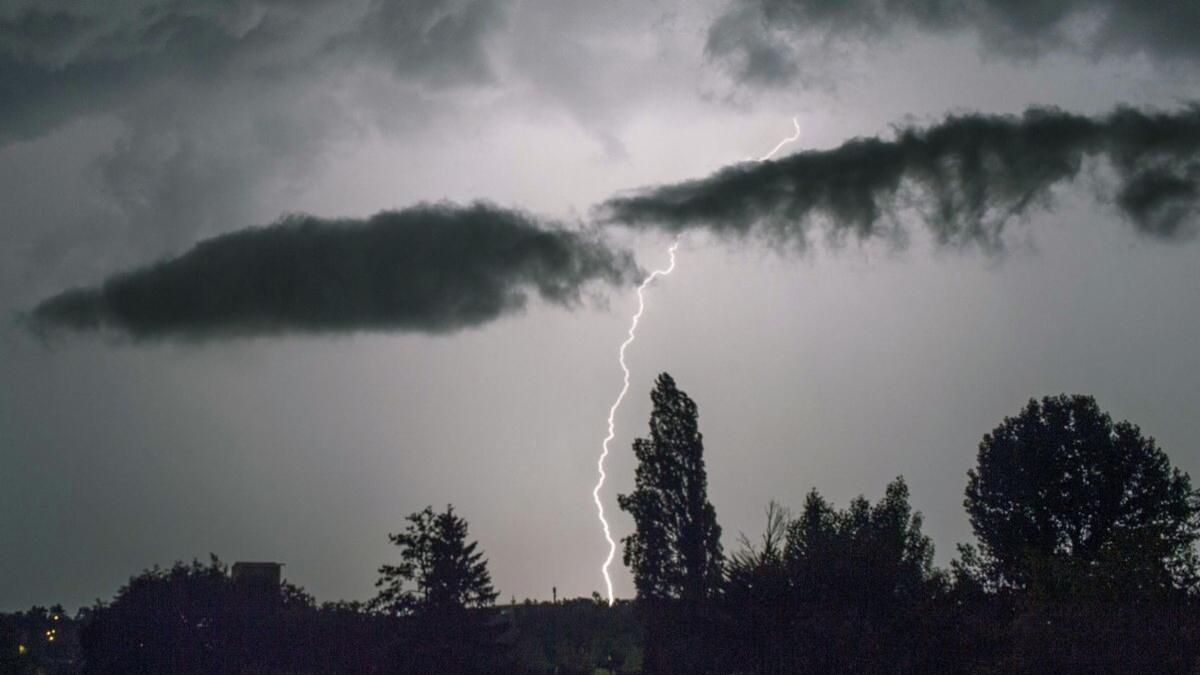Article Body
A Storm That Shook the Coast
When the people of Bassin d’Arcachon went to bed on the night of June 24, few anticipated the violent force that would descend before dawn. Between 3:00 and 5:00 a.m., powerful storm systems swept across the region, with wind gusts recorded up to 135 km/h in Cazaux — the kind of speeds more often associated with tropical storms than coastal France.
By sunrise, the damage was undeniable: fallen trees, blocked roads, collapsed power lines, and homes narrowly spared from catastrophe. And as the sun rose over the Atlantic, so too began the massive cleanup effort.
Hardest Hit: La Teste-de-Buch, Lanton, Andernos, and Lège-Cap-Ferret
In La Teste-de-Buch, residents woke to a landscape that looked like a storm film set. At the Miquelots sector, emergency crews were still clearing trees by mid-morning, with branches the size of car hoods littering the ground.
Over in Lanton, the departmental road was a maze of debris. A city bus attempting to pass a tree-laden roadway captured the surreal mix of chaos and calm — the ordinary colliding with the extraordinary. A toppled electrical pole lay precariously against a fence, its cables tangled like spaghetti.
In Andernos-les-Bains, several routes remained closed to traffic into the late morning. “We’ve had multiple emergency calls since 4 a.m., mostly due to blocked roads and minor property damage,” said Marine Gaudry, a municipal safety officer. “Thankfully, no serious injuries have been reported so far.”
And in Lège-Cap-Ferret, trees fell within meters of residential homes. The town council published dramatic photographs showing entire pines snapped like matchsticks. “This could have been far worse,” a local resident told Le Sud-Ouest. “A tree missed our living room by less than a meter.”
Historical Context: An Increasing Pattern of Extreme Weather
Storms of this magnitude are becoming more frequent in western France. According to Météo-France, the country has recorded a 28% increase in wind-related storm events over the past two decades, particularly in coastal regions such as Nouvelle-Aquitaine.
Climate scientists point to rising ocean temperatures and shifting pressure systems as key culprits. “The warmer the ocean, the more energy is available to fuel violent wind systems,” said Dr. Claire Montagnac, a climatologist at CNRS. “The southwest Atlantic coast is now seeing storm intensities that used to be rare events.”
Emergency Services Respond Swiftly, but Challenges Remain
By 8:00 a.m., technical services were deployed across the Bassin. Crews worked feverishly to remove hazardous debris, restore blocked access routes, and evaluate infrastructure damage.
Yet challenges persist. Power outages were reported in sections of Lanton and Cap Ferret, and telecommunications in some neighborhoods remained intermittent. In areas with older tree canopies, the risk of delayed falling limbs continues to pose danger.
“We ask residents to remain cautious and avoid wooded areas until assessments are complete,” said Capitaine Éloïse Bernard of the Arcachon Fire Brigade. “Our priority is public safety and fast restoration.”
Social Media as a Lifeline—and a Warning System
In the early hours, residents turned to social media to document the unfolding chaos, share real-time alerts, and check on neighbors. Videos of howling wind and crashing branches circulated quickly, helping emergency responders triage areas of greatest concern.
One widely shared video showed a massive tree crashing across a quiet Lège-Cap-Ferret street — just seconds after a cyclist had passed.
“These platforms helped us map the worst-hit sectors in real-time,” noted Deputy Mayor Julien Marchand of Andernos. “They are now essential tools in modern disaster response.”
A Wake-Up Call for the Region
This storm was more than just a passing weather event — it was a wake-up call. Local officials now face renewed pressure to fortify infrastructure, trim vulnerable treelines, and enhance early-warning systems.
“Nature is reminding us who’s in charge,” said Sandrine Lefevre, a local school principal whose roof was damaged overnight. “We can’t keep pretending these are one-off events.”
Meanwhile, towns are beginning the slow process of documenting damage for insurance and financial relief. The Préfecture of Gironde has indicated that a natural disaster declaration is under review, which could unlock emergency aid for affected households.
Conclusion: Resilience in the Face of Fury
In Bassin d’Arcachon, nature is never far from daily life — the Atlantic tides, the pine forests, the sweeping winds. But this week, those natural gifts turned tempestuous. And yet, amid the debris and disruption, the region’s resilience is evident.
Neighbors offered shelter. Firefighters worked without rest. And as cleanup continues, one thing is clear: Bassin d’Arcachon will rebuild — not just homes, but readiness for whatever storm comes next.


Comments